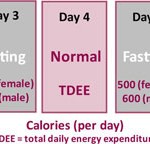1Institute for Nutritional Sciences and Physiology, University for Health Sciences, Medical Informatics and Technology, A-6060 Hall in Tirol, Eduard Wallnoefer-Zentrum 1, Austria2Department of Internal Medicine, Yale University School of Medicine, 333 Cedar Street, New Haven, CT 06510, USACopyright © 2013 Barbara Strasser and Dominik Pesta. This is an open access article distributed under the Creative Commons Attribution License, which permits unrestricted use, distribution, and reproduction in any medium, provided the original work is properly cited.Type 2 diabetes mellitus (T2D) is characterized by insulin resistance, impaired glycogen synthesis, lipid accumulation, and impaired mitochondrial function. Exercise training has received increasing recognition as a cornerstone in the prevention and treatment of T2D. Emerging research suggests that resistance training (RT) has the power to combat metabolic dysfunction in patients with T2D and seems to be an effective measure to improve overall metabolic health and reduce metabolic risk factors in diabetic patients. However, there is limited mechanistic insight into how these adaptations occur
Read original article:
Resistance Training for Diabetes Prevention and Therapy – Hindawi …








 For now classes are 6pm and 640pm at 2840 Wildwood st in the Boise Cloggers studio.
Book your class NOW!
click this ==>
For now classes are 6pm and 640pm at 2840 Wildwood st in the Boise Cloggers studio.
Book your class NOW!
click this ==>








